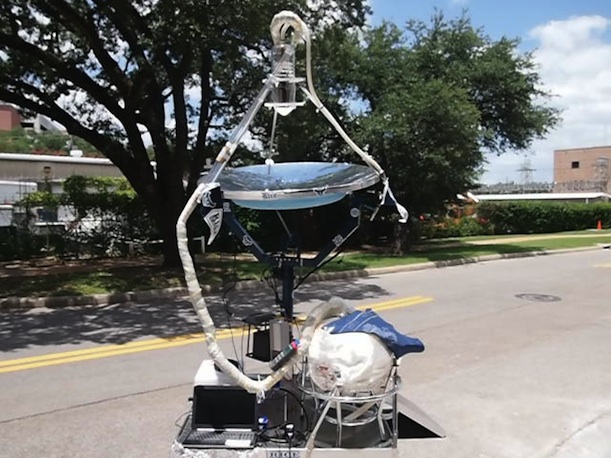
Sterilizing Medical Tools Using Solar Power Alone
Sterilizing Medical Tools Using Solar Power Alone
NOTE: This is an overview of an article which appeared on the Smithsonian web site on July 8, 2013
Hundreds of millions of people, primarily in the developing world, acquire infections as a result of improperly sterilized medical equipment. More than one-quarter of the human population worldwide lack access to electricity, and more than one half of all people in developing regions lack access to all-weather roads. The use of a newly designed device called a solarclave may solve both the problem of power as well as supply chain constraints.

An invention called the solarclave could help prevent the millions of annual infections that result from improperly cleaned medical equipment.
Photo by Oara Neumann
Developed by a group of engineers led by Oara Neumann and Naomi Halas of Rice University, the solarclave harnesses the sun’s power and, along with the unique characteristics of precise nanoparticles, sanitizes medical equipment and other instruments without need for an external electricity source. Conventional autoclaves, first invented in 1879, use electricity to produce steam, but the solarclave uses carbon and metallic nanoparticles scattered in an aqueous solution. The nanoparticles have photothermal characteristics that absorb energy much faster than the surrounding liquid, generating a large temperature difference. A parabolic dish solar collector enables a faster heat-up time and higher operating temperatures, shortening the sterilization cycle time significantly. The nanoparticles are not consumed by the heating process and can be used indefinitely.
Although the concept of using solar power to sterilize medical equipment has been researched by other teams, the solarclave is the first functioning prototype that passed FDA-level sterilization tests. The prototypes developed by Neumann and Halas were tested based on their effectiveness in killing Geobacillus stearothermophilus, a rod-shaped bacterium found in hot springs and other warm environments making it more difficult to destroy by heating than other types of microbes. Both prototypes developed for the study indicated that all the bacteria in the sample were killed within 30 minutes.
The cost of this technology is unknown at this time, but the potential uses of the solarclave may have a widespread global impact on sterilizing medical equipment and human waste, particularly where electricity is unavailable. The authors of this article believe that the device’s extraordinary efficiency in producing steam could someday be used to generate electricity.
The solarclave is described in more detail in an article in the Proceedings of the National Academy of Sciences.






